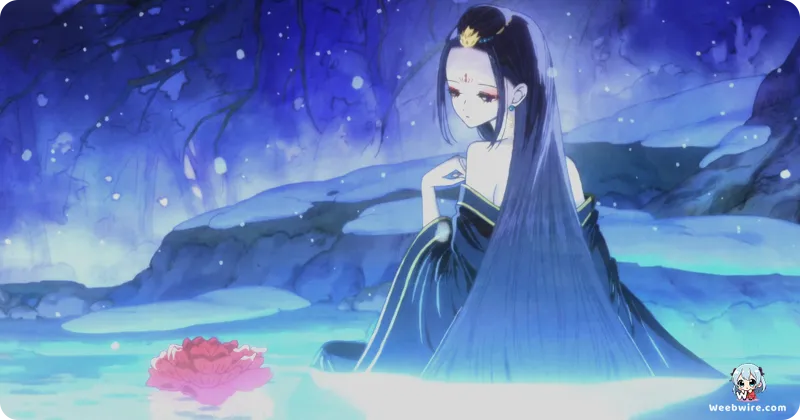Beyond the Veil: Unmasking the Ancient Lore and Spiritual Secrets of Raven of the Inner Palace

Koukyuu no Karasu (Raven of the Inner Palace), the acclaimed 2022 historical fantasy adaptation from Bandai Namco Pictures, offers a radical departure from traditional court dramas. While the genre typically centers on political power struggles and romantic intrigue among royal consorts, this series plunges into the esoteric. It establishes its protagonist, Liu Shouxing, not as a romantic rival but as an isolated, immensely powerful spiritual medium.
The production is a treasure trove of subtle world-building and lore, rewarding viewers with fascinating insights into its source material, detailed character design, and the clever utilization of historical Chinese court frameworks.
The Unique Role of the Raven Consort
The core intrigue lies with Liu Shouxing, the titular Raven Consort. Her existence is fundamentally distinct from the hundreds of other women residing in the vast Inner Palace. Her role transcends political or marital obligations; it is ancient, sacred, and supernatural.
Sequestered within the solitary Yamei Palace, Shouxing operates entirely apart from the court’s complex political machinery. A crucial fact for fans to understand is that the Raven Consort's position is the functional inverse of a typical royal consort: she must remain untouched and alone, bound by tradition. Her singular mandate is to serve as the custodian of spiritual power, resolving supernatural mysteries. She acts essentially as a spiritual detective operating beneath the veneer of royalty.
This unique setup immediately reframes her interactions with Emperor Koshun as a relationship rooted in necessary partnership and mystery solving, rather than expected courtship.
Spiritual Lineage and Mythology
The anime masterfully translates the complex spiritual mythology crafted by Kōko Shirakawa in the original light novels. The designation Raven Consort is more than a mere title; it connects Shouxing to the ancient Uruu-jin, or bird spirits, which are foundational to the kingdom's creation myths.
She functions as a living vessel for a potent spiritual entity, explaining both her immense abilities and the strict isolation she is compelled to maintain. This spiritual lineage comes at a steep personal cost, binding her existence to the palace and denying her the possibility of a conventional life. This tragic, painful duty provides a profound underlying context for her typically stoic and reserved personality.

Production Fidelity and Visual Design
Bandai Namco Pictures, renowned for diverse series like Gintama and Aikatsu!, executed a notable stylistic shift for this project. Production trivia highlights the studio’s dedication to aesthetic fidelity, closely mirroring Ayuko’s original illustrations.
The animation team meticulously rendered the historical Chinese court setting, paying obsessive attention to costume design. The specific colors used for court ranks and the intricate embroidery on Shouxing’s garments were deliberately chosen to reflect historical color palettes and sumptuary laws of imperial China, albeit within a fictional narrative. This commitment to visual realism blended with fantasy was integral to the anime’s critical acclaim.
Furthermore, Shouxing's distinctive dark purple and black robes dramatically set her apart from the bright pastels worn by other consorts, visually underscoring her spiritual isolation and separation from the traditional power hierarchy.
Supernatural Investigations as Historical Exposés
The series plot hinges on the supernatural investigation initiated by Emperor Koshun: solving the mystery of the former dynasty's heir and a lost jade hairpin. Each 'case' undertaken by Shouxing, be it a haunted chamber or a cursed artifact, is, in reality, a meticulously veiled historical record concerning past injustice, murder, or betrayal.
The narrative ingeniously employs the supernatural element as a vehicle to expose the dark, often cruel, underbelly of imperial history. This dual-genre approach elevates the Raven Consort beyond a simple spiritualist, transforming her into an investigator of forgotten, painful truths, constantly challenging the emotional toll of maintaining power within the Inner Palace walls.
Credits
Raven of the Inner Palace
Author
Kōko Shirakawa
Cover Art
Ayuko
Studio
Bandai Namco Pictures
Publisher
Shueisha
Producers





